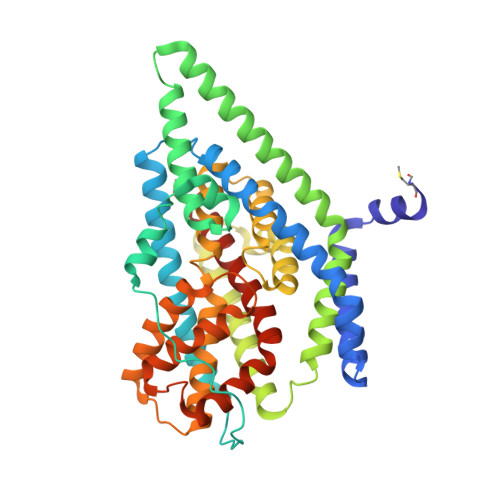Use of paramagnetic 19 F NMR to monitor domain movement in a glutamate transporter homolog.
Huang, Y., Wang, X., Lv, G., Razavi, A.M., Huysmans, G.H.M., Weinstein, H., Bracken, C., Eliezer, D., Boudker, O.(2020) Nat Chem Biol 16: 1006-1012
- PubMed: 32514183
- DOI: https://doi.org/10.1038/s41589-020-0561-6
- Primary Citation of Related Structures:
6UWF, 6UWL - PubMed Abstract:
In proteins where conformational changes are functionally important, the number of accessible states and their dynamics are often difficult to establish. Here we describe a novel 19 F-NMR spectroscopy approach to probe dynamics of large membrane proteins. We labeled a glutamate transporter homolog with a 19 F probe via cysteine chemistry and with a Ni 2+ ion via chelation by a di-histidine motif. We used distance-dependent enhancement of the longitudinal relaxation of 19 F nuclei by the paramagnetic metal to assign the observed resonances. We identified one inward- and two outward-facing states of the transporter, in which the substrate-binding site is near the extracellular and intracellular solutions, respectively. We then resolved the structure of the unanticipated second outward-facing state by cryo-EM. Finally, we showed that the rates of the conformational exchange are accessible from measurements of the metal-enhanced longitudinal relaxation of 19 F nuclei.
Organizational Affiliation:
Department of Physiology & Biophysics, Weill Cornell Medicine, New York, NY, USA.

















